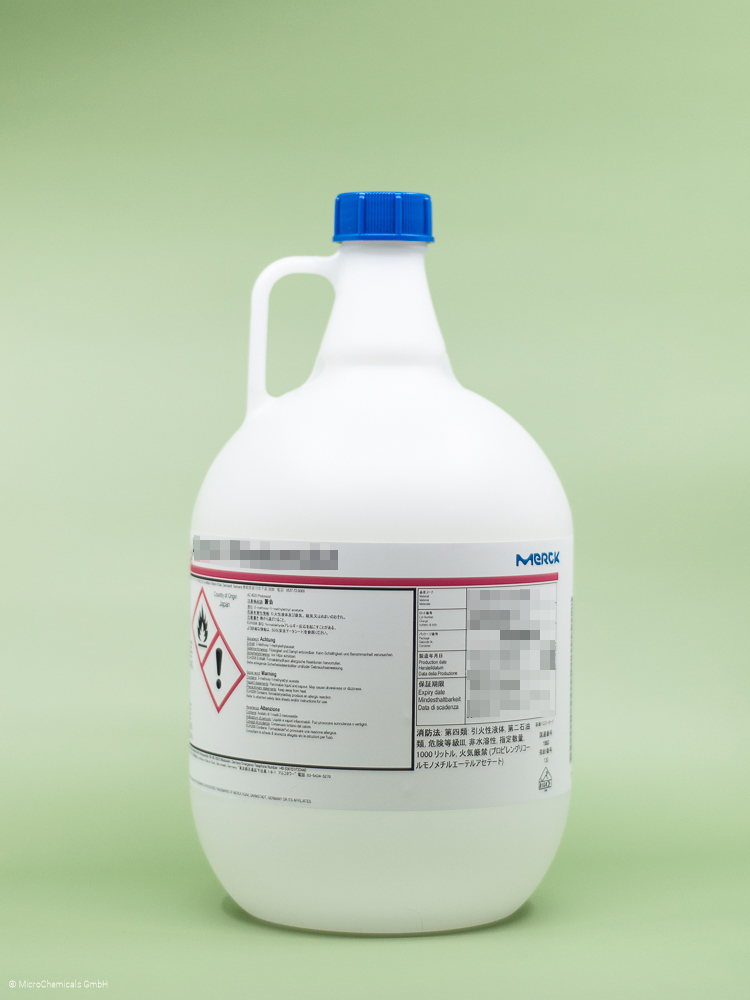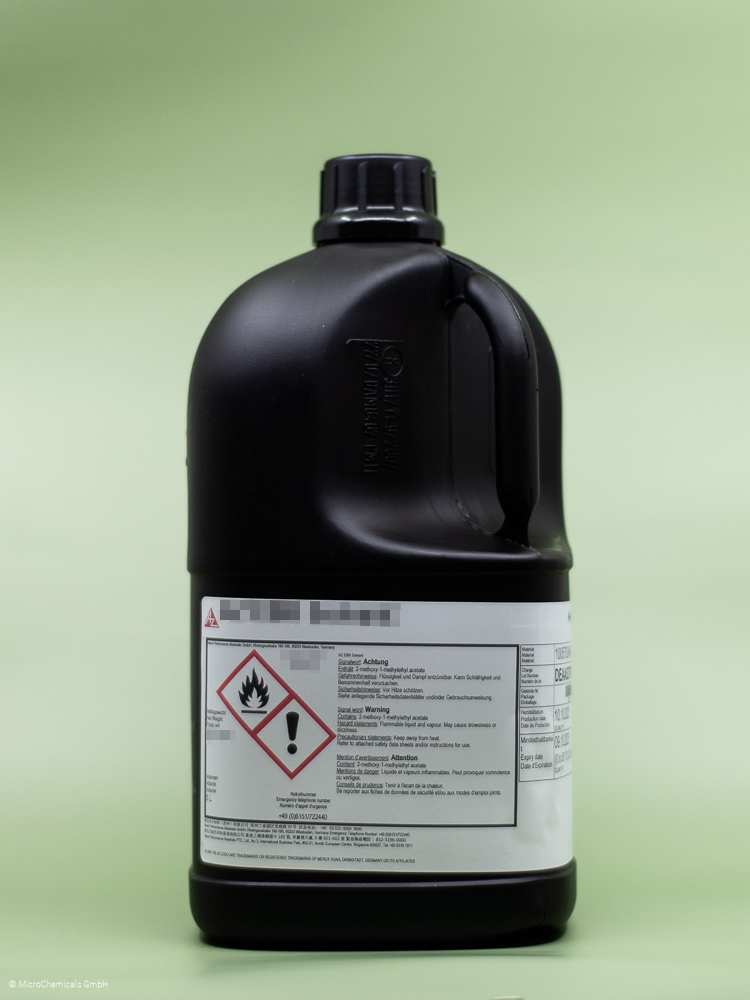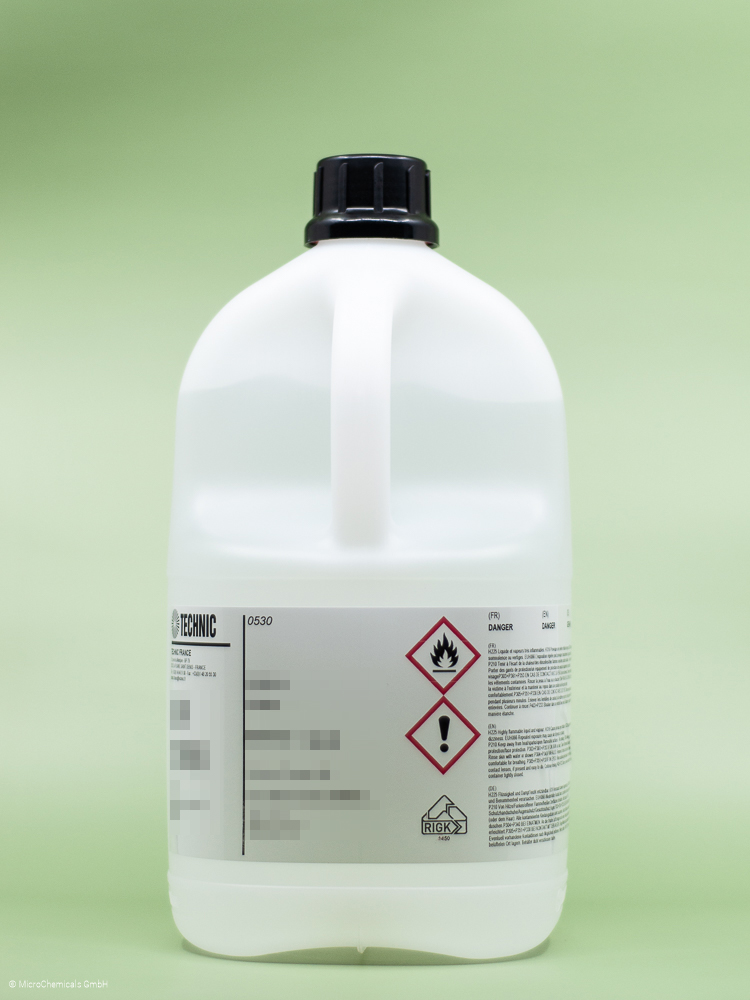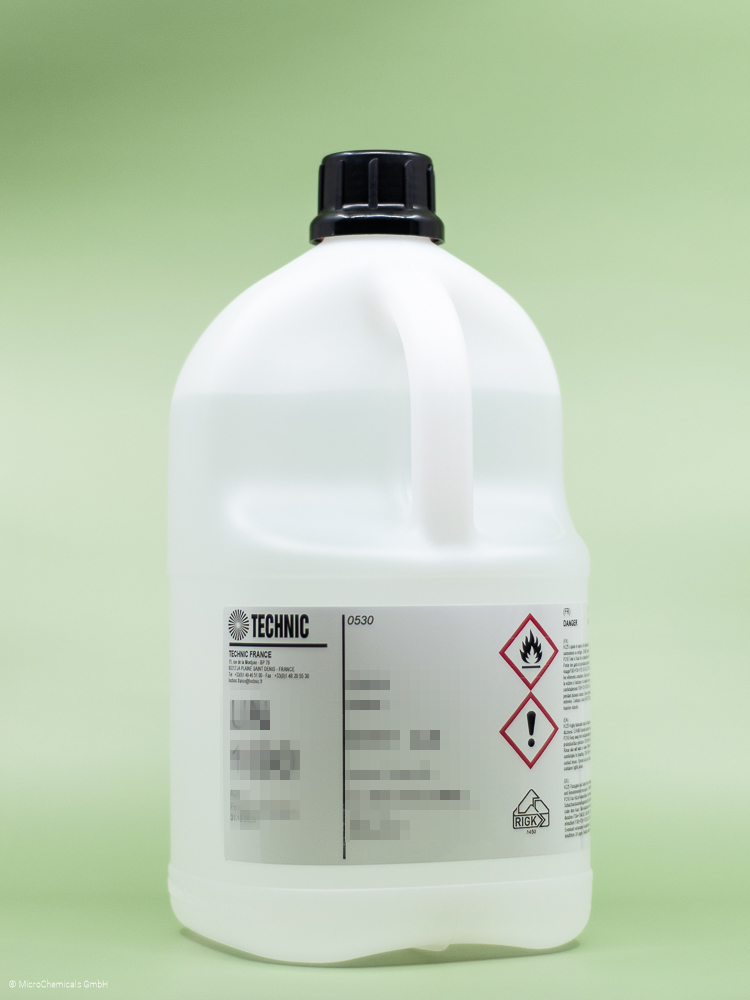TI XLiftX - 1.00 l

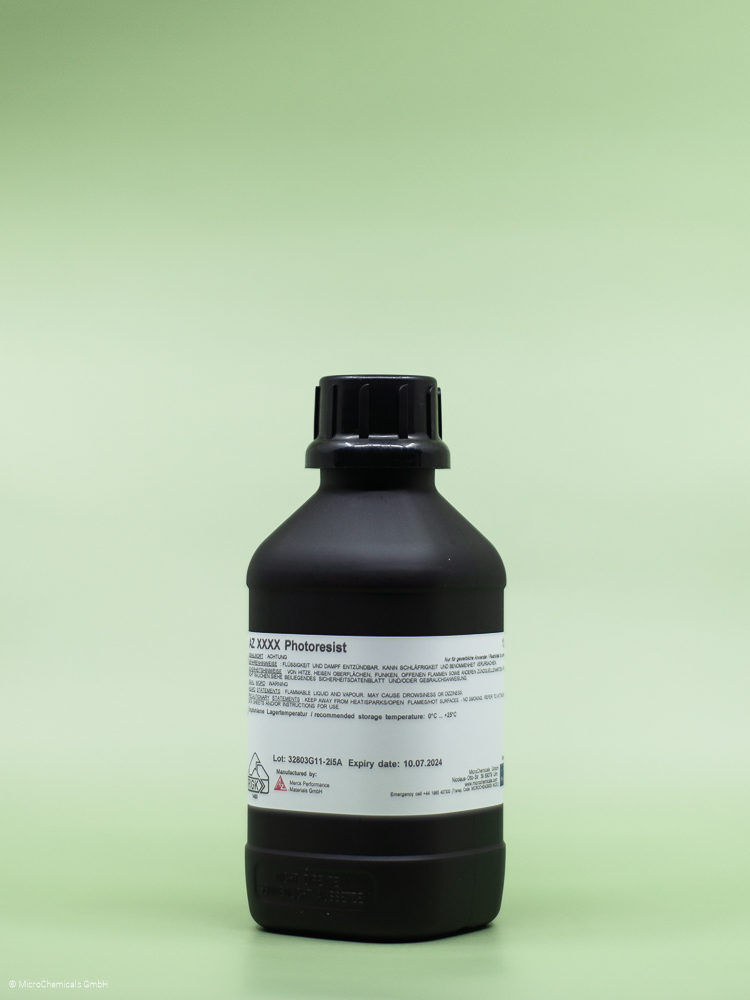
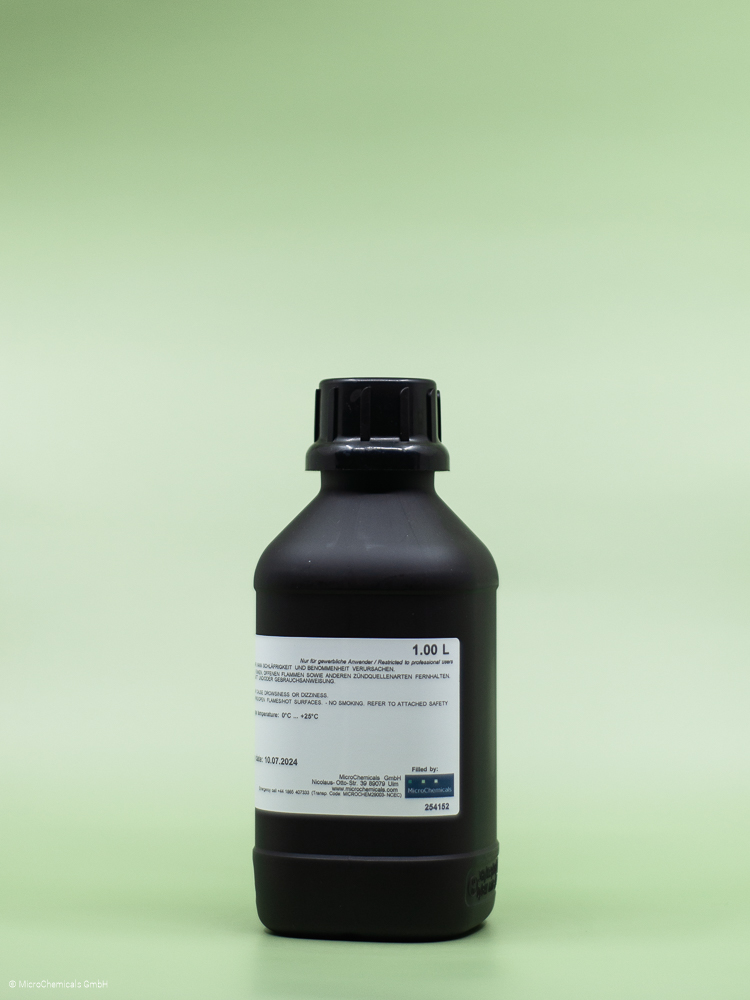









Product information "TI XLiftX - 1.00 l"
TI xLift-X
Image Reversal Resist
General Information
TI XLift-X allows resist thicknesses up to over 10 µm. However, as the resist thickness increases, the process becomes ever more time-consuming for rehydration or for the out gassing of the nitrogen formed during exposure. Thus a reasonable alternative for most applications would be the AZ® nLOF 2070 negative resist.

10.5 µm thick metal finger via lift-off with TI xLift-X
Product Properties
- Possible negative sidewall profile in image reversal mode
- Compatible with all common developers (NaOH-, KOH- or TMAH-based)
- Compatible with all common strippers (e. g. with AZ® 100 Remover, organic solvents, or aqueous alkaline)
- g-, h- und i-line sensitive (approx. 320 - 440 nm)
- Resist film thickness range approx. 4 – 25 µm
Developers
We recommend the KOH-based AZ® 400K 1:3 - 1:4 diluted.
If metal ion free developers have to be used, we recommend the TMAH-based AZ® 2026 MIF developer.
Removers
For non cross-linked resist films the AZ® 100 Remover, DMSO or other common organic solvents cab be used as stripper. If the resist film is crosslinked (e. g. by high temperature steps > 140°C, during plasma processes such as dry etching, or during ion implantation), we recommend the NMP-free TechniStrip P1316 as remover. AZ® 920 Remover can be a good choice as well, in case of harsh treated, hard to remove resist residuals.
Thinning/ Edge Bead Removal
We recommend for thinning and edge bead removal the products AZ® EBR Solvent or PGMEA.
Further Information
MSDS:
Safety Data Sheet TI xLift-X english
Sicherheitsdatenblatt TI xLift-X german
TDS:
Technical Data Sheet TI xLift-X english
Application Notes:
Further Information about Photoresist Processing
Related products
Developer
Remover




